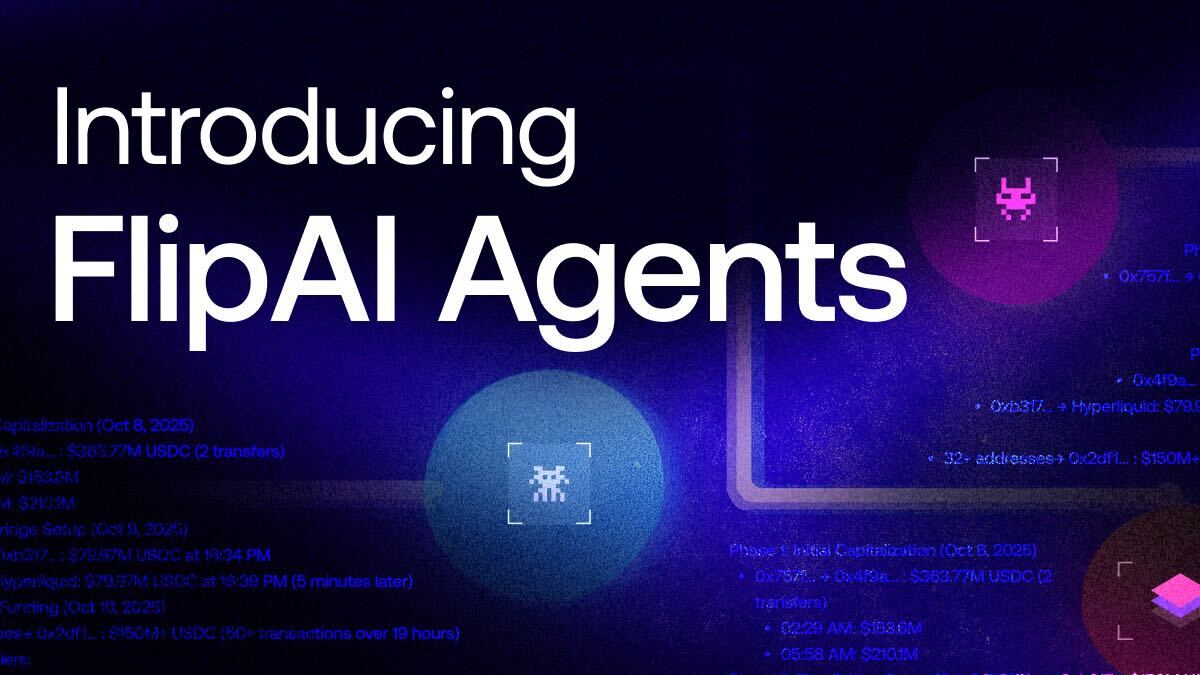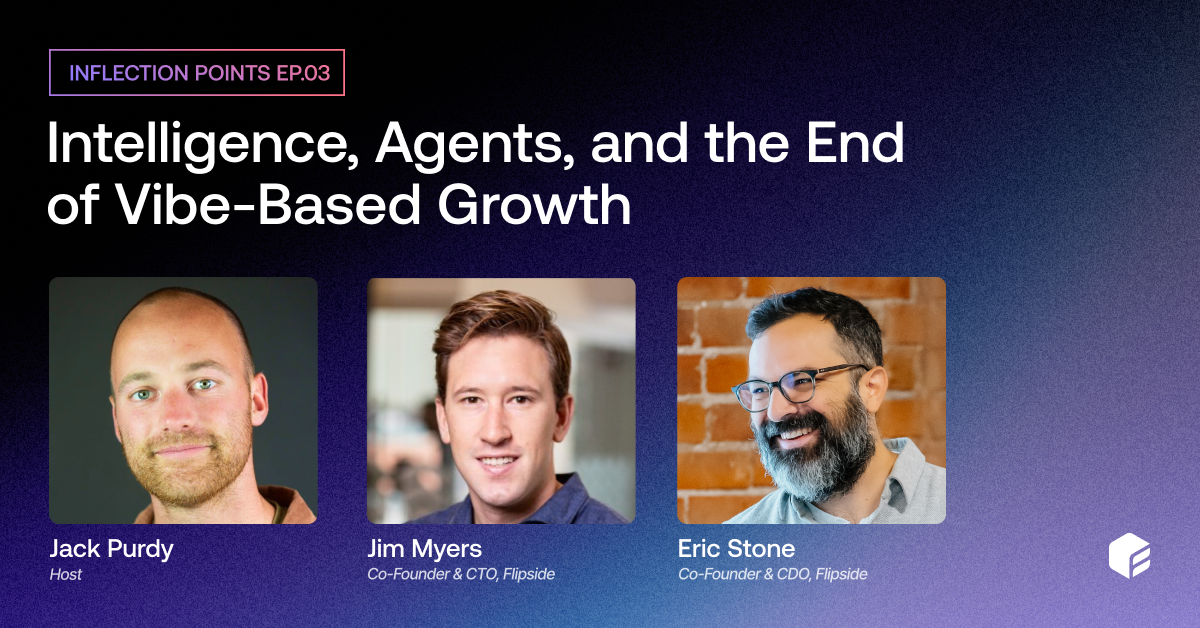How blockchain forensics works

How Blockchain Forensics Works
As 2024 brings potential regulatory updates and renewed optimism in the crypto space, the role of blockchain forensics has never been bigger. This field, once the purview of specialized experts, is now accessible to regular users, empowering you with crypto tools and insights previously reserved for a select few.
Let’s unpack how blockchain forensics works, how it can be applied to today’s blockchain projects, and how platforms like Flipside are simplifying this process.
What is Blockchain Forensics?
Within the crypto industry, the terms blockchain forensics and blockchain analysis are oftentimes used interchangeably. While these practices overlap and both are integral to understanding and navigating the blockchain, it's helpful to distinguish between the two.
Blockchain forensics involves the in-depth analysis and investigation of blockchain transactions, with a primary focus on the security and legality of blockchain transactions. Oftentimes, this is done to detect or demystify fraudulent activities such as money laundering and ensure compliance with regulations. To be effective, blockchain forensics can involve anything from simple on-chain analysis to more sophisticated methods like address clustering, pattern recognition for suspicious activities, and advanced tracking of transaction histories to identify illicit behaviors.
By contrast, blockchain analysis often refers to a more generalized approach to assessing on-chain activity and an integral part of DYOR. This can involve a closer look at overall market trends, transaction volumes, token movement, and wallet activities to gauge the health and behavior of a specific project or the broader crypto market. Within this context, blockchain forensics can be seen as a subset of blockchain analysis.
Common Approaches to Blockchain Forensics
Blockchain forensics involves a wide, ever-evolving set of approaches that depends on the nature of the on-chain activity being examined. While blockchain explorers can be used to conduct some of this analysis, more powerful crypto tools are typically needed to dive deeper into the data.
Common blockchain forensics practices include:
- Address Clustering involves the grouping of multiple addresses believed to be controlled by the same entity. This can help identify patterns across complex networks and uncover the real-world entities behind anonymous blockchain transactions.
- Transaction Analysis is the practice of understanding how and when transactions occur and identifying any unusual patterns that might indicate illicit activities. This is often essential for detecting anomalies such as money laundering and fraud and identifying malicious players within a blockchain network.
- Taint Analysis is a technique used to trace the flow of funds on the blockchain. While similar to transaction analysis, this approach is more focused on tracing the origin and subsequent movement of cryptocurrency to determine its association with known illicit activities. This technique is often used to track the flow of potentially 'contaminated' or 'tainted' funds, such as those used for illegal transactions.
- Blockchain Decompiling refers to the reverse engineering of smart contract code. Smart contracts are often written in high-level programming languages (like Solidity for Ethereum) and then compiled into bytecode to be deployed on the blockchain. Decompiling involves reversing this process to determine the underlying code and logic of a deployed smart contract – particularly when the original source code isn’t available or verifiable.
- Temporal Analysis involves the examination of time-based characteristics of transactions recorded on a blockchain, such as transaction frequency and timing. This is often useful in identifying automated or programmed transactions, which could be indicative of bots or fraudulent schemes that obfuscate the true health and security of existing blockchain projects.
- UTXO Analysis involves tracking the creation and consumption of UTXOs (Unspent Transaction Outputs) over time. This methodology tracks each unspent output individually, rather than focusing on entire transaction histories or wallet behaviors. As a result, UTXO analysis can help uncover hidden connections between transactions and wallets that might not be evident when looking at aggregate transaction patterns or wallet activities.
Oftentimes, multiple blockchain forensics approaches are pursued simultaneously using various crypto tools or combined with open-source intelligence (OSINT) gathering, which involves collecting data from a variety of public sources outside the blockchain, such as social media posts, and other online activities.
Free Crypto Tools for User-Led Blockchain Forensics
Blockchain forensics is longer confined to the realm of specialists, with powerful crypto tools like Flipside offering ordinary crypto users the ability to conduct their own on-chain analyses – free of charge.
With Flipside, you can dig into on-chain data across 26+ blockchain networks and protocols without the need for coding skills or deep technical expertise. More specifically, Flipside lets you:
- Create custom data queries for specific blockchain projects and networks using the platform’s curated, SQL-ready data. This ability to input individual wallet addresses, transaction hashes, or specific time frames across multiple networks allows for more precise yet comprehensive data extraction.
- Visualize your results via custom dashboards to make it easier to identify on-chain patterns and anomalies. Unlike blockchain explorers and other more limited crypto tools which require poring through endless rows of technical jargon, Flipside’s data visualization tools make it easy to understand both macro transaction flows and individual wallet behaviors.
- Stay informed on the latest trends in the crypto world by grounding your insights on real-time data. The most widely used blockchain forensics practices can be executed on Flipside via tailored data queries, and the platform’s flexible, cross-chain configuration makes it easy to replicate successful approaches and keep up with the latest forensic methodologies and tools.
Blockchain forensics extends beyond mere transaction tracking and crypto fraud detection – it helps enhance overall market integrity and trust. Institutional and individual users alike use can use powerful crypto tools like Flipside to detect large-scale fraud and ensure regulatory compliance and reporting. And for ordinary crypto users, blockchain forensics is essential for spotting anomalies in transaction data and identifying high-risk transactions and wallets, protecting you from potential market manipulation and outright scams.
Try Flipside today and make the most of our free blockchain forensics tools.







